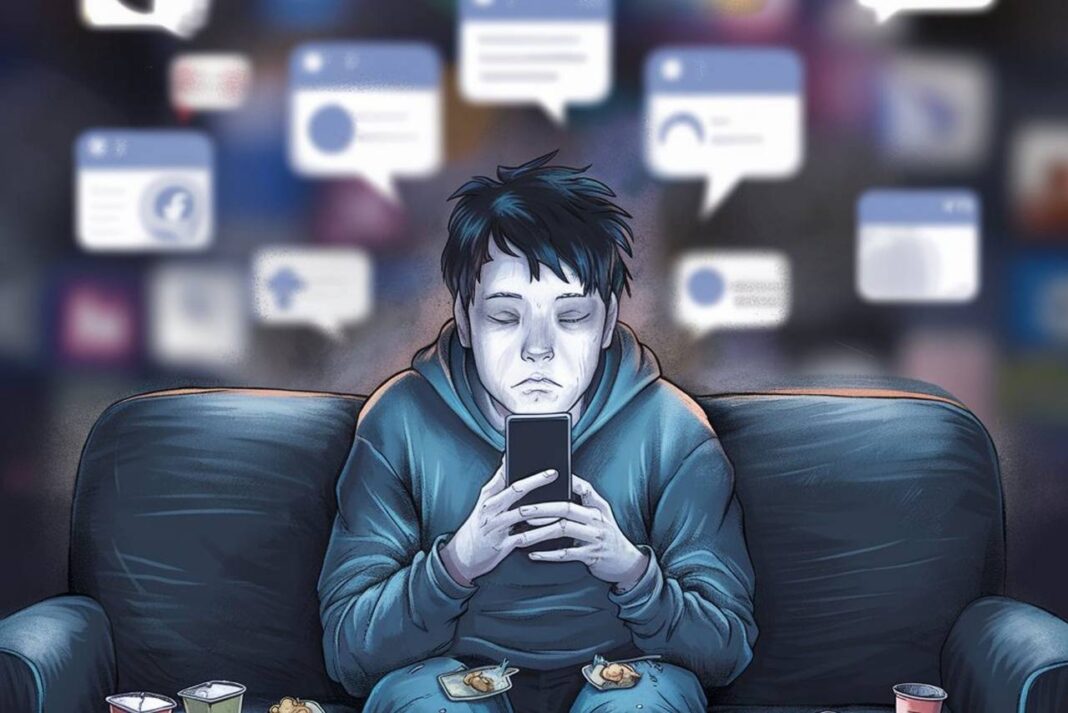In recent years, nearly everyone has found themselves spending an increasing amount of time on social media and in front of screens. Once upon a time, we followed current events through newspapers or the evening news. Today, global developments are delivered directly to our smartphones in real time. Through social media, we gain instant access to what is happening anywhere in the world.
But is this immediacy truly beneficial, or does it pose a hidden threat to our mental well-being? Does the constant bombardment of information genuinely make us more informed, or does it quietly erode our inner sense of calm? Does every piece of news or visual content enrich us, or does it subconsciously instill the belief that the world is a dangerous and chaotic place?
Television broadcasts also tend to be saturated with negative content. A large proportion of what we watch revolves around crises, violence, disasters, and loss. Is the world truly this dark, or are these stories deliberately emphasized to capture and maintain viewer attention? Those who grew up in the 1990s may recall that news bulletins often featured uplifting or hopeful segments. Today, such content is increasingly rare.
Empirical research supports the link between social media overuse and mental health challenges. A study by Bilge, Baydili, and Göktaş (2020) found a statistically significant and positive correlation between social media addiction and levels of depression, anxiety, and stress (p. 228).
Anxiety is a natural and functional emotional response that arises when an individual perceives a threat. Continuous exposure to negative or threatening contenteven in the absence of real danger can trigger feelings of unease and heighten one’s sense of vulnerability. Individuals who frequently consume distressing media via social platforms or television are particularly susceptible to increased anxiety levels due to this heightened perception of threat.
However, it is essential to understand that anxiety is not inherently negative. When experienced at an appropriate level, anxiety serves an adaptive purpose by promoting self-protection and motivating proactive behavior. For instance, a person who experiences no anxiety at all may fail to recognize or prepare for genuinely risky situations. Therefore, the goal should not be to eliminate anxiety entirely, but to regulate it to a manageable, functional level.
In this regard, complete avoidance of social media or news content is not a recommended solution. In fact, such avoidance may exacerbate anxiety over time. Instead, a more sustainable strategy involves limiting exposure, critically evaluating content, and developing balanced media consumption habits.
Recent findings reveal that as time spent on social media increases, so does the prevalence of social anxiety. This is particularly evident among young adults, where significant associations have been observed between daily usage durations and elevated anxiety levels (Arslan, Abra, Erbaş, Yüceoğlu, & Erdugan, 2023, p. 317).
The rapid digitalization of daily life has consolidated many of our core activities communication, work, entertainment, even the formation of romantic relationshipsinto a single device: the smartphone. Unsurprisingly, this has led to extended screen time and blurred boundaries in our interactions with technology. People increasingly reach for their phones even during in-person social interactions. A single notification may distract one individual, and soon both participants in a conversation are absorbed in their screens. These micro-moments exemplify the subtle but significant impact of social media on interpersonal communication.
Excessive social media use disrupts daily routines, fosters social withdrawal, and contributes to feelings of loneliness and anxiety. Notably, these patterns intensified during the COVID-19 pandemic (Arslan et al., 2023, pp. 316–317).
The Core Question: How Can We Regulate Social Media Use?
The solution is not to demonize social media or avoid it entirely, but to foster conscious, deliberate, and healthy usage habits. Below are evidence-informed strategies that may help mitigate the psychological effects of overexposure to digital media:
Recommendations:
- Practice intentional use. Be mindful about when, why, and how often you access social media. Set limits on daily screen time to protect your mental health. �
- Question content accuracy. Avoid consuming emotionally charged or distressing news first thing in the morning, as this may negatively shape your mood for the rest of the day. �
- Control notifications. Reducing or disabling alerts can minimize distractions and help maintain focus during important tasks or interactions. �
- Take digital detoxes. Periodically step away from social media and news to recalibrate your mental space and reduce anxiety levels. �
- Customize your feed. Actively flag or mute distressing content. By curating your exposure, you can foster a more positive digital environment. �
- Engage in offline activities. Prioritize face-to-face interactions and activities that promote well-beingsuch as hobbies, nature walks, or physical exerciseto counterbalance screen time. �
- Seek out positive content. Limit your consumption of negative news and explore uplifting or inspiring content to enhance your psychological resilience.
References
- Arslan, R., Abra, S., Erbaş, F., Yüceoğlu, D., & Erdugan, S. (2023). The Relationship Between Social Media Usage Duration and Anxiety. İstanbul University Publications. �
- Bilge, Y., Baydili, E., & Göktaş, M. (2020). The Relationship Between Social Media Addiction and Depression, Anxiety, and Stress. Kırıkkale University Journal of Social Sciences, 10(2), 220–235.


